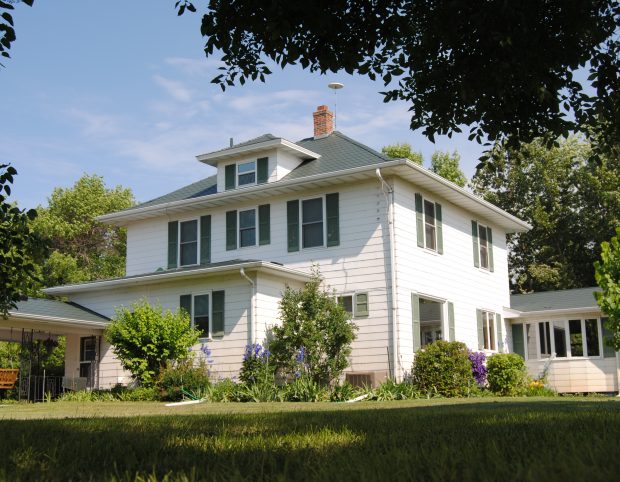Window replacement is not often at the top of a homeowner’s checklist, but it should be. Windows play a vital role in your home’s comfort, efficiency, and curb appeal. Replacing old, broken, or drafty windows should be a priority, especially before the cold winter temperatures have a chance to seep in. Please keep reading to learn more about when to replace your windows and what to expect during the replacement process.
When to Repair vs. Replace Windows
You may not always need a full window replacement. There are certain scenarios when repairs may be more than sufficient.
- Situations where repair is a good choice:
- Cracked or broken glass: If the frames are solid and only the glass is damaged, replacing just the glass is often enough.
- Minor drafts: Sometimes, fresh caulking, weatherstripping, or adding storm windows can solve the issue without a full replacement.
- Hardware malfunctions: Stuck locks, broken latches, or jammed tracks can often be repaired with replacement parts.
- Cosmetic issues: Small scratches, peeling paint, or cloudy screens are usually minor fixes rather than reasons to replace.
- Signs it’s time for a full window replacement:
- Chronic condensation between panes: This means the seal has failed, and the insulating gas is gone. Repairs aren’t effective for this issue long-term.
- Persistent drafts or leaks: If your energy bills keep climbing despite repeated repairs, the frame or window unit itself may be compromised.
- Warped or rotted frames: Moisture can cause wooden frames to swell, rot, or even attract pests. At that point, repair is rarely worth it.
- Operational struggles: If your windows are consistently hard to open, close, or lock, they’re no longer functioning as designed.
- Age: If your windows are 20+ years old, replacement usually offers better efficiency and durability than piecemeal fixes.
What’s Involved in Window Replacement
Window replacement is more than swapping old glass for new. It’s a process designed to ensure the new windows perform as efficiently and securely as possible. Here’s a closer look at the steps:
- Initial Assessment & Measurement
A professional contractor measures your existing openings to ensure the new windows fit precisely. This step also includes checking the surrounding frame and structure for rot, mold, or water damage. - Choosing the Right Window
Homeowners pick from a wide variety of styles (double-hung, casement, sliding, bay, etc.), frame materials (vinyl, wood, aluminum, fiberglass), and glass options (double-pane, triple-pane, low-E coatings, gas fills). Your choice will affect energy efficiency, aesthetics, and cost. - Removing the Old Window
The installer carefully removes the old sashes, trim, and sometimes the entire frame, depending on whether it’s a full-frame replacement (everything is replaced, including the frame) or an insert replacement (new window fits inside the existing frame). - Preparing the Opening
The rough opening is cleaned and inspected. Damaged areas are repaired, insulation is added where necessary, and waterproof flashing or membranes are installed to protect against leaks. - Installing the New Window
The new window is positioned, leveled, and secured into place with shims and fasteners. Proper alignment is crucial for smooth operation. - Sealing and Insulating
Expanding foam insulation and caulk are applied around the edges to eliminate gaps that could cause drafts or water infiltration. - Finishing Touches
Interior trim and exterior casing are installed to give the window a clean, polished look. The installer double-checks that the window opens, closes, and locks correctly. - Final Cleanup and Walkthrough
The work area is cleaned, old windows are hauled away, and the installer demonstrates how to operate and maintain your new windows.
What Material Is Best For Replacement Windows?
Wood is beautiful, but it is prone to myriad issues, from rot to pests. It also requires frequent sanding and repainting. Aluminum is an option as well, but it has high conductivity, meaning it is much less energy efficient. It can also corrode in extreme weather and, let’s face it, that’s every week in Nebraska. Wood clad is an option, but it is extremely expensive.
So what material is best for replacement windows? At ABC Seamless of Nebraska, we vouch for vinyl as a durable, affordable, and low maintenance option for full window replacement. We proudly partner with Gentek, a company that maintains the highest standards in quality and customer service. Gentek windows are further reinforced with an energy efficient polymer that is 400 times stronger than traditional vinyl and backed by a 30-year lifetime warranty. Your home will be fully insulated from the elements and you may be pleasantly surprised by your next energy bill.
Advantages of Window Replacement
New windows bring a host of benefits, including:
Improved Energy Efficiency & Lower Bills
Modern windows are designed with advanced technology, such as double or triple panes, argon or krypton gas fills, and low-E coatings. These features dramatically reduce heat transfer, keeping your home warmer in the winter and cooler in the summer.
The result is less strain on your HVAC system and noticeably lower monthly energy bills. Over time, those savings can offset a big part of the replacement cost.
Enhanced Comfort Year-Round
Drafty windows can create cold spots in the winter and hot, uncomfortable areas in the summer. New, properly sealed windows eliminate those temperature swings for a more balanced and cozy indoor environment no matter the season.
Noise Reduction
If you live near a busy street, airport, or noisy neighborhood, older single-pane windows do little to block sound. Replacement windows, especially those with insulated glass, can significantly cut down on outside noise.
Increased Home Value & Curb Appeal
Windows are one of the first things people notice about a house. Stylish new frames and glass instantly refresh the look of your home from the outside, while clean lines and modern finishes brighten the inside. For homeowners planning to sell, new windows are a strong selling point that can increase resale value and attract buyers.
Better Safety & Security
New windows come with stronger locks, reinforced frames, and tempered or laminated glass options that are harder to break. This added security helps protect your family and belongings while giving you peace of mind.
Reduced Environmental Impact
Energy-efficient windows don’t just save you money; they also reduce your carbon footprint. By lowering your home’s energy consumption, you’re helping conserve resources and reduce emissions.
Window Replacement In Omaha, Lincoln, & Grand Island
Nebraska’s notoriously bitter cold weather is coming, and fully functional windows will go a long way in keeping your home comfortable. Don’t wait until small window problems become bigger (and more expensive) headaches in the dead of winter. Call or go online to schedule your free quote and get ready to enjoy the benefits of a brighter, more efficient, and more comfortable home.




